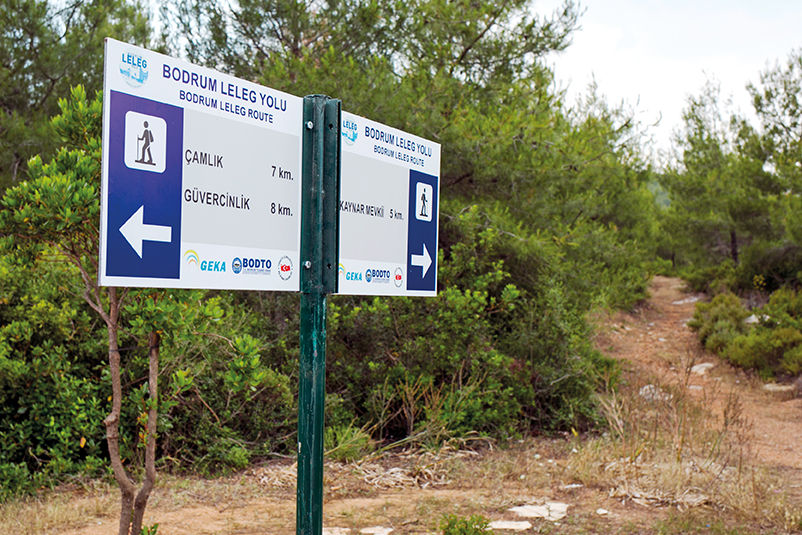The Bodrum Leleg Route is a historical trade route that connected the ancient city of Lelegia (located in modern-day Bodrum, Turkey) to cities along the Aegean and Mediterranean coasts. The route was used for the transportation of goods such as wine, olive oil, and other agricultural products. It played an important role in the economic and cultural exchange between the ancient civilizations of the Aegean and Mediterranean regions.
The Bodrum Leleg Route was active during the Bronze Age and continued to be used until the Roman period. It passed through various ancient cities and harbors, including Knidos, Halicarnassus (modern-day Bodrum), and Miletus. The route was crucial for the spread of cultural and artistic influences, as well as the exchange of goods and ideas between the civilizations of the Aegean and Mediterranean regions. Today, the remains of many ancient harbors, cities, and monuments along the route provide valuable insights into the history and culture of the region.

In addition to its economic and cultural significance, the Bodrum Leleg Route was also strategically important. The control of the route was highly valued, and various powers, including the Persians, Alexander the Great, and the Roman Empire, fought for control of the region throughout history. The route was also used as a transportation and communication link between the Aegean and the Mediterranean during times of war, allowing armies to move troops and supplies quickly and efficiently.
Today, the Bodrum Leleg Route is a popular tourist destination, and visitors can explore the remains of ancient cities, harbors, and monuments along the route. The ancient ruins, stunning scenery, and rich cultural heritage of the region continue to draw visitors from around the world.
Bodrum Leleg Route Map
The Bodrum Leleg Route map is also a source of inspiration for archaeologists and historians, who study the ancient civilizations that lived along the route to gain a better understanding of their history, culture, and way of life. Excavations and studies of the sites along the route have provided valuable information about the economic, political, and social systems of the ancient civilizations in the Aegean and Mediterranean regions.
In recent years, efforts have been made to protect and preserve the historical and cultural heritage of the Bodrum Leleg Route. Many of the ancient sites along the route have been designated as protected monuments, and various initiatives have been undertaken to promote sustainable tourism and to ensure that future generations can continue to learn from and appreciate the rich cultural heritage of the region.
Overall, the Bodrum Holiday is a unique and fascinating part of the world’s cultural heritage, and its significance continues to be recognized and appreciated by people from all over the world.

The Bodrum Leleg Route is also an important area for marine conservation and ecological research. The route passes through some of the richest and most biologically diverse areas in the Aegean and Mediterranean seas, including important habitats for numerous species of fish, birds, and other marine animals.
As a result, there have been various efforts to conserve and protect the marine environment along the Bodrum Leleg Route. This includes initiatives to reduce the impact of human activities on the marine environment, such as fishing, tourism, and shipping. Additionally, research and monitoring programs have been established to better understand the ecological health of the region and to promote sustainable management and use of its resources.
Finally, the Leleg Route is also an important destination for adventure tourism, including activities such as sailing, diving, and windsurfing. The route’s stunning scenery, rich cultural heritage, and abundant natural beauty make it a popular destination for travelers and outdoor enthusiasts from around the world.
In conclusion, the Bodrum Leleg Route is an important part of the world’s cultural, historical, and natural heritage, and its significance continues to be recognized and appreciated by people from all over the world.


